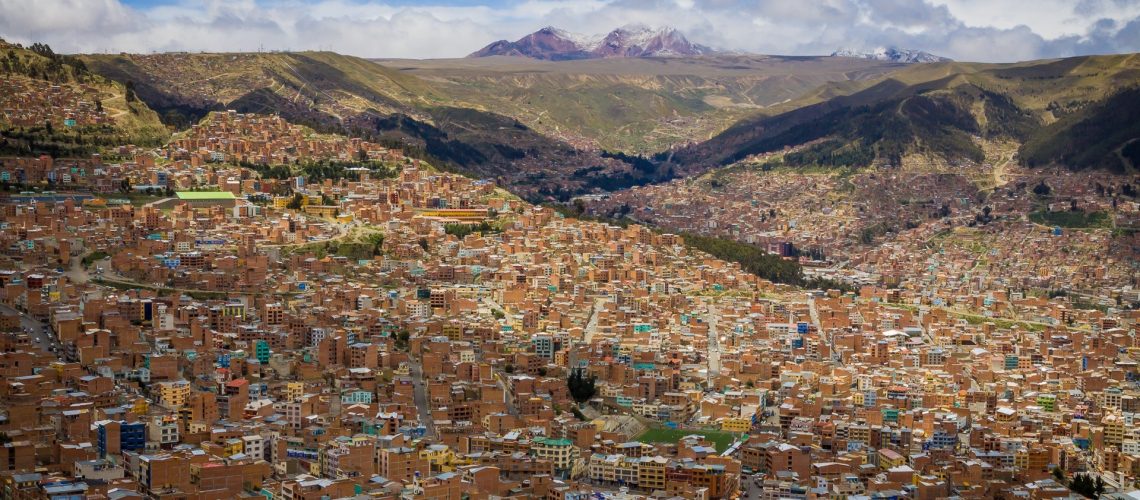La Paz
If you are planning to travel to Bolivia, most likely your journey will start in La Paz. Compared to the rest of the country’s mostly remote and untouched landscapes, the city is an urban jungle. Whether you’re walking through a bustling market, savouring some traditional Bolivian street food, or watching it all from above in a cable car, the city’s vibrant chaos is a delight for all your senses.
Mi Teleferico

La Paz, the highest capital in the world, has a unique topography. The densely packed city is located in the centre of a large valley enveloped by the beautiful Cordillera Mountains. We find there’s no better way to get a feel for a city than by seeing the whole picture – with a view. Luckily – the city’s revolutionary public transportation system consists of the world’s largest urban aerial cable car network. For just a few Bolivianos, we hopped on and got a comprehensive bird’s eye view of the city’s layout and its breathtaking surrounding mountains.
From the skyscraper filled downtown, the cable car climbed towards the hills over middle-class suburban homes, and then even higher up the cliff sides covered in slums. The higher we went, the more we realized the difference in altitude correlated with inequality in social status. Later on, we learnt the introduction of the cable cars in the city had a strong socioeconomic impact by facilitating the connection between the different neighborhoods. Impressively, the environmentally friendly cable cars run on electricity and solar power. Not only does it avoid traffic and pollution, but also avoids creating it!



Witch’s Market
You can spend a whole day wandering around the bustling markets of La Paz. Everyday hundreds of vendors line the streets of Rosario neighborhood – divided into areas which cater to different needs. As we wandered around, we stumbled on a street displaying an array of vibrant traditional textiles, while another displayed intricate wooden sculptures and clay pottery. But the most colorful one was the fruit market – bags and boxes overflowing with fresh ripe fruits – some we had never seen before and didn’t know their name. This is the most authentic spot in town for a freshly squeezed orange juice or a hot-out-the-oven empanada.

As we continued exploring, we reached the notorious Witch’s Market – where you can find kitsch souvenirs hanging alongside dried frogs, snakes, and even llama fetuses. These animals are considered lucky talismans and are usually offered to Pachamama, a goddess from ancient Incan mythology and the equivalent of Mother Earth, in exchange for health, good fortune and safe travels. The llama fetuses in particular are cheaper alternatives for sacrificing a live llama, which is offered in return for protection during the construction of a new building. Personally, we opted for a llama wool sweater – and hoped that would be enough to protect me (at least from the cold) during my travels in Bolivia.












